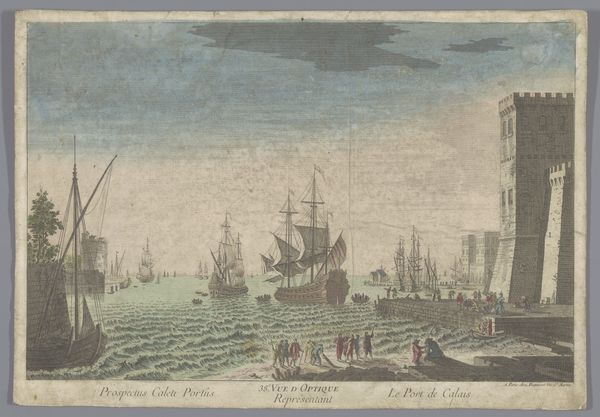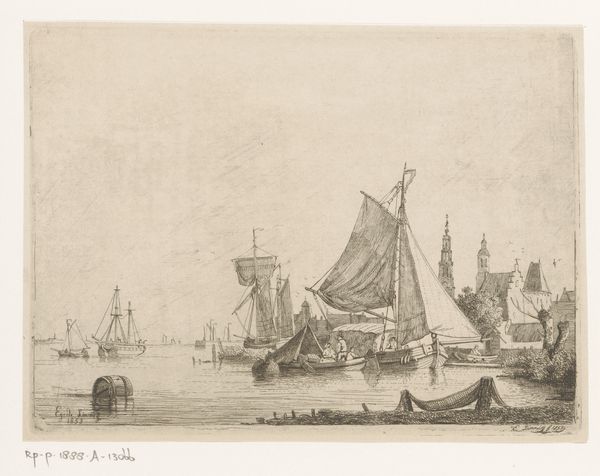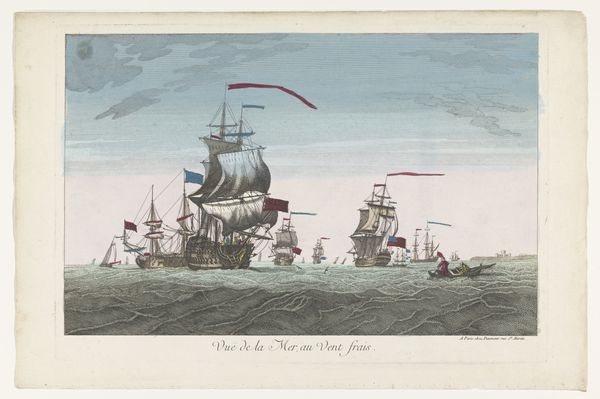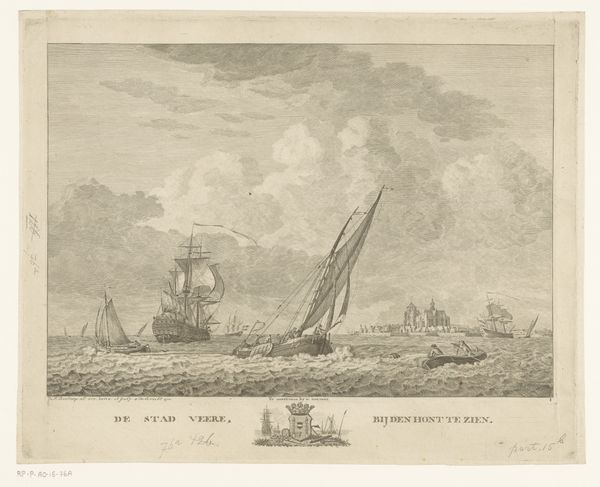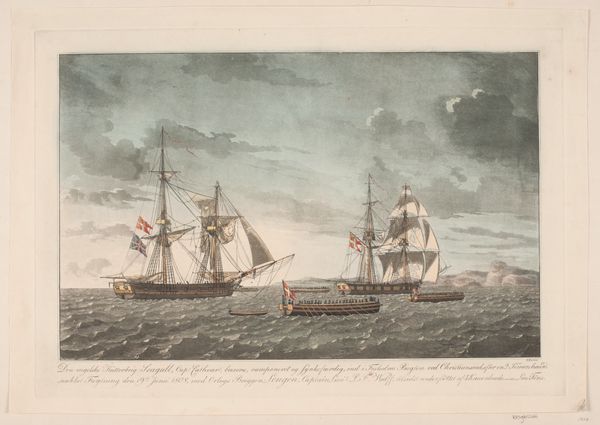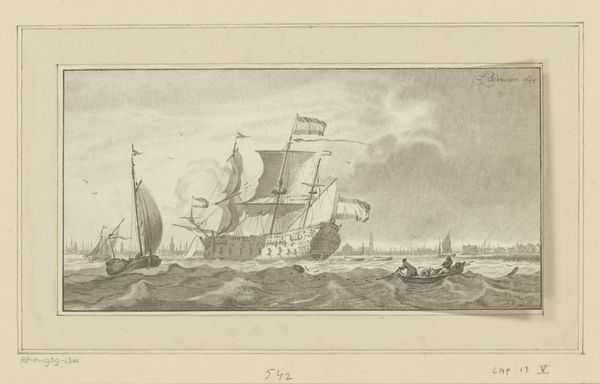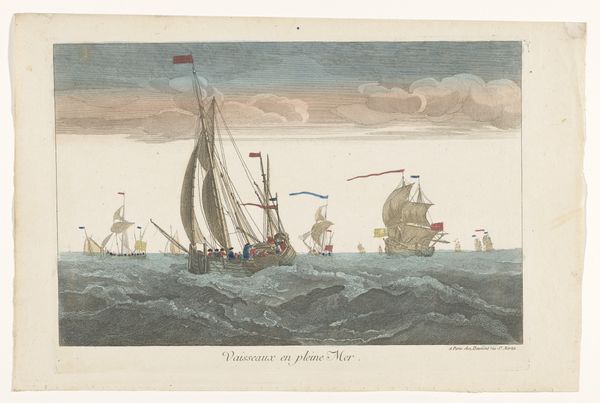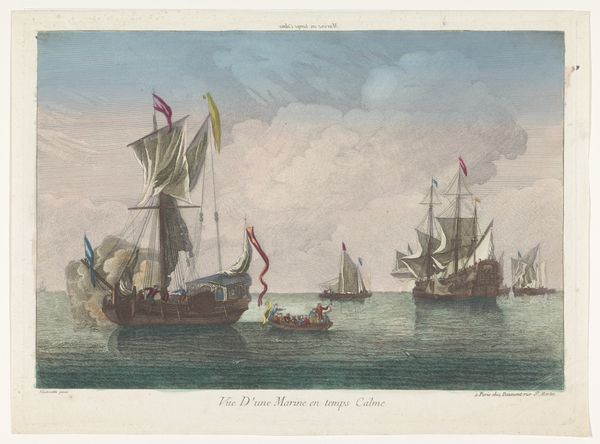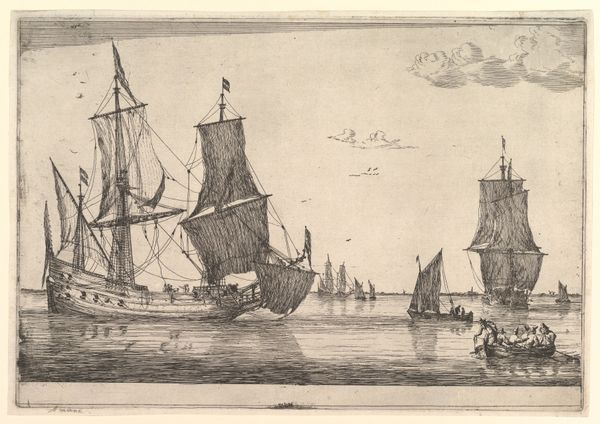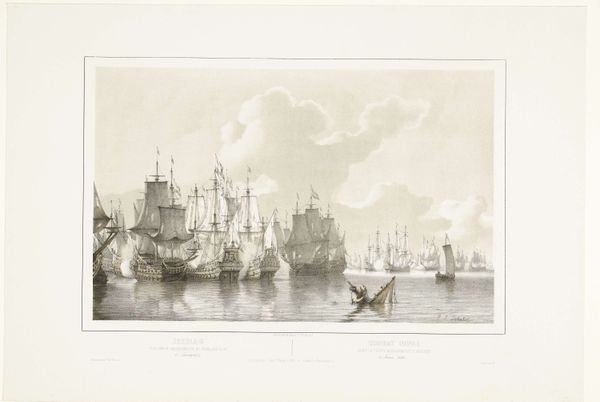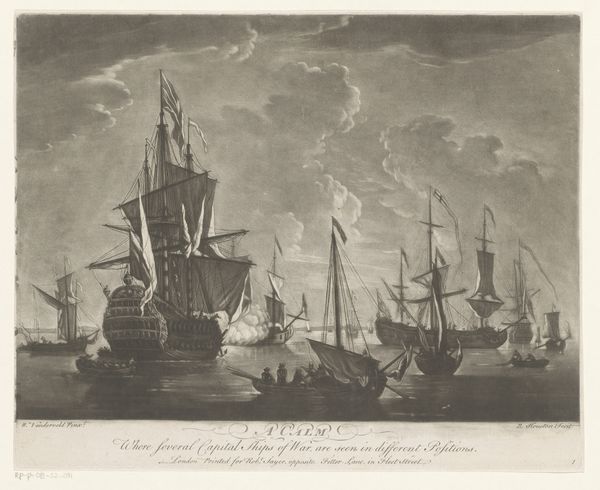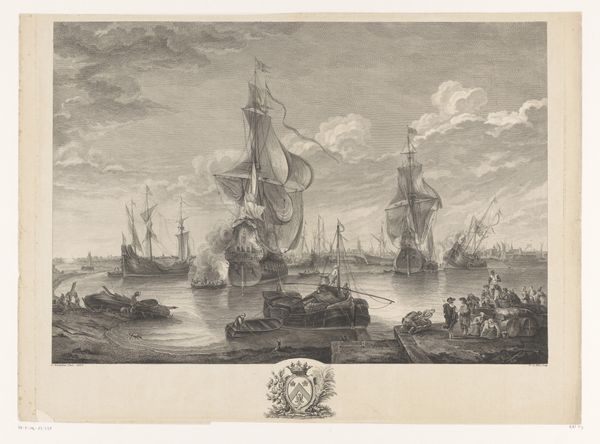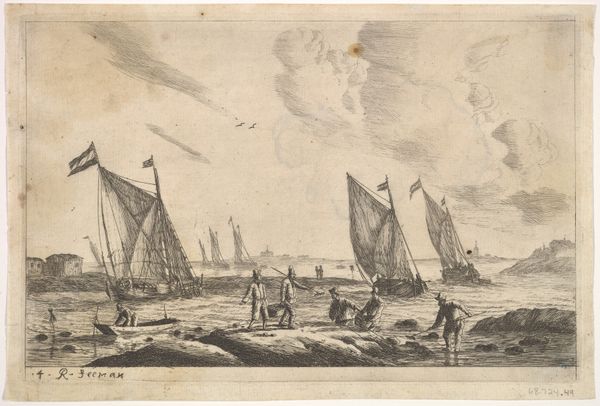
print, etching
#
baroque
# print
#
etching
#
landscape
#
cityscape
#
genre-painting
Dimensions: height 294 mm, width 429 mm
Copyright: Rijks Museum: Open Domain
Editor: This is "Zeegezicht met schepen en boten bij zonsondergang," or "Seascape with Ships and Boats at Sunset," an etching by Jean-François Daumont, dating from between 1745 and 1775. It feels very much like a scene of industry, rather than simple beauty. What strikes you about this piece? Curator: For me, the appeal lies in understanding how the artist employed etching. It allows for the reproduction of images, making art accessible to a broader audience, and this has social implications. Who would have been buying these prints, and what kind of lives did they lead? Were they mariners, merchants, or maybe just enthusiasts of the sea? Editor: That's an interesting angle. It hadn't occurred to me to think about who this would have been for. Does the subject matter point to the artist trying to represent something specific about Dutch maritime life at the time? Curator: Exactly! The materials – the copper plate, the inks, the paper - these weren’t cheap, yet the print was likely more affordable than an original painting. Consider the labour: the engraver, the printer, the vendors. It becomes a commodity, depicting other commodities moving across the water, potentially connecting the Dutch Republic to global trade networks. The etching’s fine lines help convey texture and the way the sun dances on the water. How would the Dutch populace consume or see these prints in their homes? Editor: I see. So you're less interested in the aesthetic qualities and more in how it reflects the processes of production and consumption of art. Curator: Precisely. It's about deconstructing the artistic process to reveal its socioeconomic context. It forces us to reconsider our assumptions about art's inherent value and its position within a society. What societal class do you think would display or enjoy this print? Editor: Hmm, probably people connected to maritime industries in some way, those who profit from or facilitate the process in the image, those invested in its continued success. Curator: Indeed, which in return, helps disseminate power and values within the ruling class. Editor: Thanks! I hadn't considered that an image of leisure could also represent a cog in the machine of production. Curator: I hadn't considered that until now myself. There's more to the etching's history than initially meets the eye.
Comments
No comments
Be the first to comment and join the conversation on the ultimate creative platform.
